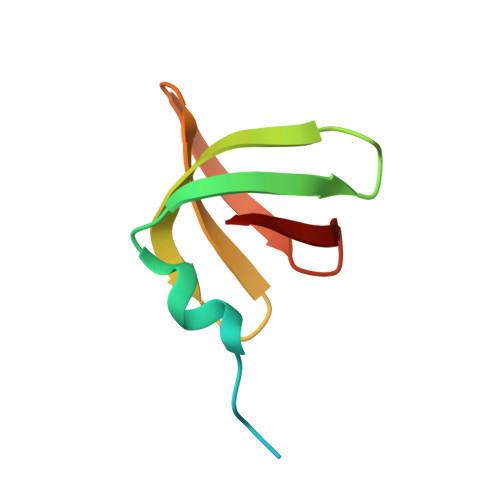Characterization of RNA-binding properties of the archaeal Hfq-like protein from Methanococcus jannaschii.
Nikulin, A., Mikhailina, A., Lekontseva, N., Balobanov, V., Nikonova, E., Tishchenko, S.(2017) J Biomol Struct Dyn 35: 1615-1628
- PubMed: 27187760
- DOI: https://doi.org/10.1080/07391102.2016.1189849
- Primary Citation of Related Structures:
4X9C, 4X9D, 5DY9 - PubMed Abstract:
The Sm and Sm-like proteins are widely distributed among bacteria, archaea and eukarya. They participate in many processes related to RNA-processing and regulation of gene expression. While the function of the bacterial Lsm protein Hfq and eukaryotic Sm/Lsm proteins is rather well studied, the role of Lsm proteins in Archaea is investigated poorly. In this work, the RNA-binding ability of an archaeal Hfq-like protein from Methanococcus jannaschii has been studied by X-ray crystallography, anisotropy fluorescence and surface plasmon resonance. It has been found that MjaHfq preserves the proximal RNA-binding site that usually recognizes uridine-rich sequences. Distal adenine-binding and lateral RNA-binding sites show considerable structural changes as compared to bacterial Hfq. MjaHfq did not bind mononucleotides at these sites and would not recognize single-stranded RNA as its bacterial homologues. Nevertheless, MjaHfq possesses affinity to poly(A) RNA that seems to bind at the unstructured positive-charged N-terminal tail of the protein.
- a Institute of Protein Research , Russian Academy of Sciences , Pushchino , Moscow region , 142290 , Russia.
Organizational Affiliation:























